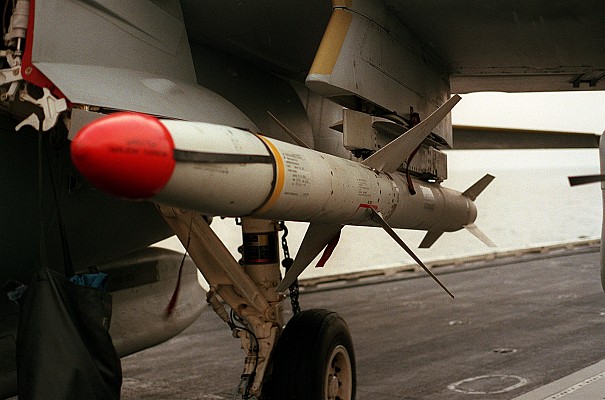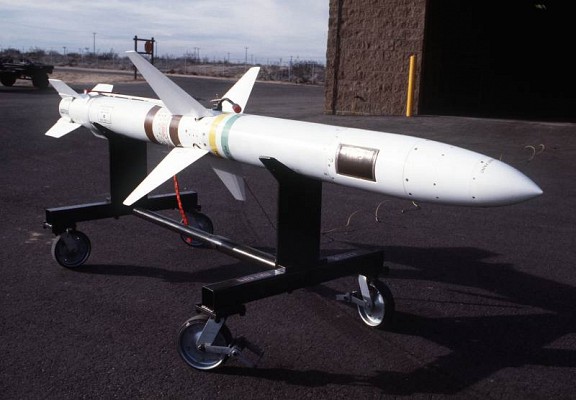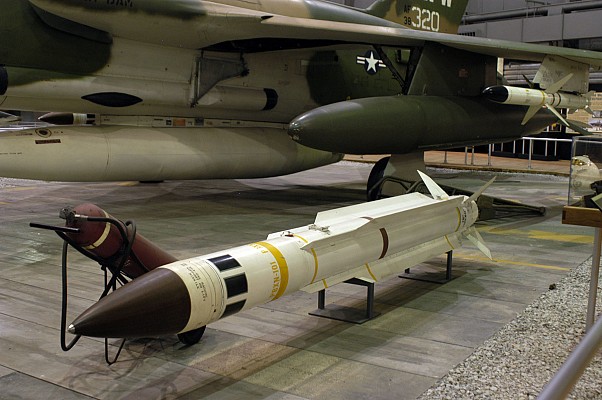AGM-88 HARM
Overview

AGM-88 HARM
AGM-88 HARM anti-radiation missile fitted with protective nose cone.
Source: US DoD -
© Public domain
United States - Raytheon
Description
Introduction
The AGM-88 HARM is an anti-radiation missile of US origin. It was developed in the early 1980's to replace the earlier AGM-45 Shrike and AGM-78 Standard ARM in US military service. The HARM is a more capable and versatile missile than its predecessors and has received various physical and software updates to match new radar technology.
Design
The HARM uses a passive radar homing seeker. The seeker homes in on the radar signals emitted from an enemy radar. A dual thrust smokeless solid propellant rocket motor provides the HARM with supersonic speed and a standoff range against most air defense systems. A large blast fragmentation warhead
Users
The HARM was acquired by both the US Navy and the Air Force. Many nations in NATO and nations with good diplomatic ties to the USA have acquired the HARM. It is used on a multitude of modern fighter aircraft, including the F-16, F/A-18, late model F-15's and the Tornado.
Variants of the HARM
Details
Related articles

AGM-45 Shrike
The HARM is a more capable and universal anti-radiation missile compared to the older AGM-45 Shrike. This had no less than selectable homing sections for specific target types.

AGM-78 Standard ARM
The AGM-88 was developed to remedy the deficiencies of the AGM-78. Although successful, the AGM-78 was very expensive, not as fast as desired and was very heavy.